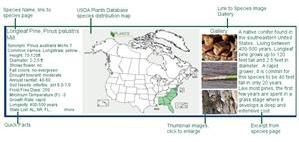
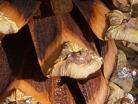



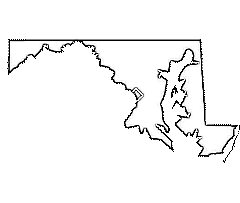
Old Line State, 'Strong deeds, gentle words'
Maryland
|
|
|
|
|
| A-Z scientific | ||
| A-Z by Common Name | ||
| Families | ||
| Browse by State | ||
| Rare or Endangered Species | ||
| Trees_with_Special_Uses | ||
| Tallest and Biggest |
| Aceraceae Maple Family | ||
| Anacardiaceae Sumac Family | ||
| Annonaceae Custard Apple Family | ||
| Aquifoliaceae Holly Family | ||
| Arecaceae, Palm Family | ||
| Betulaceae Birch family | ||
| Bignoniaceae Trumpet Creeper Family | ||
| Burseraceae Frankincense Family | ||
| Caprifoliaceae Honeysuckle Family | ||
| Chrysobalanaceae Coco-plum Family | ||
| Cornaceae Dogwood Family | ||
| Cupressaceae Cypress Family | ||
| Cyrillaceae Cyrilla Family | ||
| Ebenaceae Ebony Family | ||
| Ericaceae Heath Family | ||
| Fabaceae Pea Family | ||
| Fagaceae Beech Family | ||
| Hamamelidaceae Witch Hazel Ffamily | ||
| Hippocastanaceae Horse Chestnut Family | ||
| Juglandaceae Walnut Family | ||
| Lauraceae Laurel Family | ||
| Leitneriaceae Corkwood Family | ||
| Magnoliaceae Magnolia Family | ||
| Meliaceae Mahogany Family | ||
| Moraceae Mulberry Family | ||
| Myricaceae Bayberry Family | ||
| Myrsinaceae Myrsine Family | ||
| Myrtaceae Myrtle Family | ||
| Nyctaginaceae Four Oclock Family | ||
| Olacaceae Olax Family | ||
| Oleaceae Olive Family | ||
| Pinaceae Pine Family | ||
| Platanaceae Plane Tree Family | ||
| Polygonaceae Buckwheat Family | ||
| Rhamnaceae Buckthorn Family | ||
| Rosaceae Rose Family | ||
| Rubiaceae Madder Family | ||
| Rutaceae Rue Family | ||
| Salicaceae Willow Family | ||
| Sapindaceae Soapberry Family | ||
| Sapotaceae Sapodilla Family | ||
| Simaroubaceae Quassia Family | ||
| Styracaceae Storax Family | ||
| Symplocaceae Sweetleaf Family | ||
| Theaceae Tea Family | ||
| Tiliaceae Lindon Family | ||
| Ulmaceae Elm Family | ||
| Taxaceae Yew Family | ||
| Yucca Family |
| Maple A-Z |
| sumac_family_a-z |
| custard_apple_family_a-z |
| holly_trees_a-z |
| palm_family_a-z |
| birch_family_a-z |
| trumpet_creeper_family_a-z |
| honeysuckle_family_a-z |
| dogwood_family_a-z |
| cypress_family_a-z |
| heath_family_a-z |
| pea_family_a-z |
| beech_family_a-z |
| walnut_family_a-z |
| magnolia_family_a-z |
| olive_family_a-z |
| rose_family_a-z |
| willow_family_a-z |
| franklinia |
| elm_family_a-z |
| Federal List | ||
| State Lists | ||
| Invasive_species |
| Restoration of the American Chestnut | ||
| Restoration of the American Elm | ||
| Sustainable Forestry |
| Contact Us | ||
| Our Contributors | ||
| Photo of the Month | ||
| Usage Requirements | ||
| FAQ | ||
| Report a Broken Link |
| photo_submission |
| Photo Store |

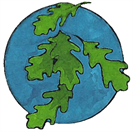

™

Wednesday, May 21, 2025
Native Trees of Maryland

Custom Search
The diversity of habitat in Maryland helps
helps provide the ideal setting for many tree species to thrive. Here, the southern range of many northern species and the northern extreme of southern species overlap, enriching the to the biota of the state. In the low lying coastal areas of eastern Maryland trees like bald cypress can be found along streams, lakes, and near marshes. Western Maryland holds higher altitude species like Table-Mountain Pine and Red Spruce, which are found no where else in the state. A great way to see the forests of Maryland, is to visit one of the
helps provide the ideal setting for many tree species to thrive. Here, the southern range of many northern species and the northern extreme of southern species overlap, enriching the to the biota of the state. In the low lying coastal areas of eastern Maryland trees like bald cypress can be found along streams, lakes, and near marshes. Western Maryland holds higher altitude species like Table-Mountain Pine and Red Spruce, which are found no where else in the state. A great way to see the forests of Maryland, is to visit one of the
10 State Forests or many State Parks. Along the way, you will see waterfalls, impressive exposed rocks, many species of birds and most certainly white tailed deer.
According to Maryland's Big Tree Registry, the tallest tree in the state is an American Sycamore measuring 139 feet tall. Until it was felled in 2002, Maryland was also home to the largest known White Oak in the United States. The Wye Oak, is estimated to have been around 500 years old and was 96 feet tall, measured over 31 feet in circumference, and the trunk weighed a whopping 61,000 pounds. In addition to being the nation's largest, it is often referred to as Maryland's oldest citizen.
Nature lovers visiting Maryland can enjoy a variety of experiences while exploring the landscape. Assateague Island is home to Assateague State Park, where visitors can enjoy Maryland's only oceanfront park and perhaps see the horses that roam as they please. Perhaps one of the best examples of a Loblolly Pine forest may be found in Pocomoke River State Park along with cypress swamps where a day of fishing is sure to bring home a great catch.
Wooded marshes, rolling farm land, tumbling streams, sunlight dappled deciduous forests, and more provide a plethora of hiking opportunities to see all that Maryland has to offer. The forests are filled with lush greenery and the sounds of wildlife and their beauty is usually only a short drive away.
According to Maryland's Big Tree Registry, the tallest tree in the state is an American Sycamore measuring 139 feet tall. Until it was felled in 2002, Maryland was also home to the largest known White Oak in the United States. The Wye Oak, is estimated to have been around 500 years old and was 96 feet tall, measured over 31 feet in circumference, and the trunk weighed a whopping 61,000 pounds. In addition to being the nation's largest, it is often referred to as Maryland's oldest citizen.
Nature lovers visiting Maryland can enjoy a variety of experiences while exploring the landscape. Assateague Island is home to Assateague State Park, where visitors can enjoy Maryland's only oceanfront park and perhaps see the horses that roam as they please. Perhaps one of the best examples of a Loblolly Pine forest may be found in Pocomoke River State Park along with cypress swamps where a day of fishing is sure to bring home a great catch.
Wooded marshes, rolling farm land, tumbling streams, sunlight dappled deciduous forests, and more provide a plethora of hiking opportunities to see all that Maryland has to offer. The forests are filled with lush greenery and the sounds of wildlife and their beauty is usually only a short drive away.

State Tree: White Oak, Quercus alba

Maryland Native Tree Facts

Forested acres: 2.7 million
Percent of total area forested: 43%
Predominant Forest Type: Oak-Hickory
Number of State Forests: 10
Number of Tree city USA communities: 40
Number of invasive tree species: 4 (see state list for noxious/invasive plants)
Insects of Concern: Gypsy Moth, Southern Pine Beetle
Pathogens of Concern: Dutch Elm Disease, White Pine Blister Rust, Oak Wilt, Dogwood Anthracnose, Chestnut Blight
Number or Rare, Threatened or Endangered Species: 19
Number of tree families in our collection: 29
Sources:
Arborday.org
US Forest Service
Maryland Department of Natural Resources:
Maryland Natural Heritage Program. 2010. Rare, Threatened and Endangered Plants of Maryland. April 2010 edition. Maryland Department of Natural Resources, Wildlife and Heritage Service, Annapolis, Maryland.
United States Department Of Agriculture, Natural Resources Conservation Services: PLANTS Database
Additional state resources:
Maryland Park Service
University of Maryland Extension
Percent of total area forested: 43%
Predominant Forest Type: Oak-Hickory
Number of State Forests: 10
Number of Tree city USA communities: 40
Number of invasive tree species: 4 (see state list for noxious/invasive plants)
Insects of Concern: Gypsy Moth, Southern Pine Beetle
Pathogens of Concern: Dutch Elm Disease, White Pine Blister Rust, Oak Wilt, Dogwood Anthracnose, Chestnut Blight
Number or Rare, Threatened or Endangered Species: 19
Number of tree families in our collection: 29
Sources:
Arborday.org
US Forest Service
Maryland Department of Natural Resources:
Maryland Natural Heritage Program. 2010. Rare, Threatened and Endangered Plants of Maryland. April 2010 edition. Maryland Department of Natural Resources, Wildlife and Heritage Service, Annapolis, Maryland.
United States Department Of Agriculture, Natural Resources Conservation Services: PLANTS Database
Additional state resources:
Maryland Park Service
University of Maryland Extension
Maryland Native Tree Families and Genera

Useful information while browsing species:
• How to read a botanical name
• How to use our species boxes:
• How to read a botanical name
• How to use our species boxes:
Additional Resources:
North American Native Tree Families
North American A to Z List by Scientific Name
North American A to Z List by Common Name
North American Native Tree Families
North American A to Z List by Scientific Name
North American A to Z List by Common Name
click to enlarge.
-Color denotes a tree that is rare or endangered

Please note: This is not a complete list of all native tree families and species found in Maryland. We are constantly working towards a more comprehensive list and will add families and their species as completed.
Follow the links to view species native to Maryland. If the genus is not linked, species are listed on the family page.
Aceraceae, Maple
Anacardiaceae, Sumac
Rhus, Sumac
Toxicodendron, Poison Sumac
Betulaceae, Birch
Alnus, Alder
Betula, Birch
Carpinus, Hornbeam
Corylus, Hazelnut
Ostrya, Hophornbeam
Bignoniaceae, Trumpet Creeper
Caprifoliaceae, Honeysuckle
Cornaceae, Dogwood
Cornus, Dogwood
Nyssa, Tupelo
Cupressaceae- Cypress
Chamaecyparis, Cedar
Juniperus, Juniper
Taxodium, Baldcypress
Thuja, Arborvitae
Aceraceae, Maple
Anacardiaceae, Sumac
Rhus, Sumac
Toxicodendron, Poison Sumac
Betulaceae, Birch
Alnus, Alder
Betula, Birch
Carpinus, Hornbeam
Corylus, Hazelnut
Ostrya, Hophornbeam
Bignoniaceae, Trumpet Creeper
Caprifoliaceae, Honeysuckle
Cornaceae, Dogwood
Cornus, Dogwood
Nyssa, Tupelo
Cupressaceae- Cypress
Chamaecyparis, Cedar
Juniperus, Juniper
Taxodium, Baldcypress
Thuja, Arborvitae
Ebenaceae, Ebony
Diospyros, Persimmon
Ericaceae, Heath
Fabaceae, Pea
Gleditsia, Locust
Fagaceae, Beech
Quercus, Oak
Hamamelidaceae, Witch-hazel
Hippocastanaceae, Horse-chestnut
Juglandaceae, Walnut
Carya, Hickory
Juglans, Walnut
Lauraceae, Laurel
Magnoliaceae, Magnolia
Moraceae, Mulberry
Myricaceae, Bayberry
Oleaceae, Olive
Fraxinus, Ash
Diospyros, Persimmon
Ericaceae, Heath
Fabaceae, Pea
Gleditsia, Locust
Fagaceae, Beech
Quercus, Oak
Hamamelidaceae, Witch-hazel
Hippocastanaceae, Horse-chestnut
Juglandaceae, Walnut
Carya, Hickory
Juglans, Walnut
Lauraceae, Laurel
Magnoliaceae, Magnolia
Moraceae, Mulberry
Myricaceae, Bayberry
Oleaceae, Olive
Fraxinus, Ash
Pinaceae, Pinus
Abies, Fir
Pinus, Pine
Platanaceae, Plane-tree
Platanus, Sycamore
Rhamnaceae, Buckthorn
Rosaceae, Rose
Crataegus, Hawthorn
Rubiaceae, Madder
Rutaceae, Rue
Salicaceae, Willow
Populus, Cottonwood
Salix, Willow
Symplocaceae, Sweetleaf
Tiliaceae, Lindon
Tilia, Basswood
Ulmaceae, Elm
Celtis, Hackberry
Ulmus, Elm
Abies, Fir
Pinus, Pine
Platanaceae, Plane-tree
Platanus, Sycamore
Rhamnaceae, Buckthorn
Rosaceae, Rose
Crataegus, Hawthorn
Rubiaceae, Madder
Rutaceae, Rue
Salicaceae, Willow
Populus, Cottonwood
Salix, Willow
Symplocaceae, Sweetleaf
Tiliaceae, Lindon
Tilia, Basswood
Ulmaceae, Elm
Celtis, Hackberry
Ulmus, Elm
(s) making it especially vulnerable to extirpation. Species with this rank are actively tracked by the Wildlife and HeritageService.
• S2 State rare. Imperiled in Maryland because of rarity (typically 6 to 20 estimated occurrences or few remaining individuals or acres
in the State) or because of some factor(s) making it vulnerable to becoming extirpated. Species with this rank are actively tracked by
the Wildlife and Heritage Service.
• S3 Watch List. Rare to uncommon with the number of occurrences typically in the range of 21 to 100 in
Maryland. It may have fewer occurrences but with a large number of individuals in some populations, and it
may be susceptible to large-scale disturbances. Species with this rank are not actively tracked by the Wildlife and Heritage Service.
• S3.1 A "Watch List" species that is actively tracked by the Wildlife and Heritage Service because of the global significance of
Maryland occurrences. For instance, a G3 S3 species is globally rare to uncommon, and although it may not be currently threatened
with extirpation in Maryland, its occurrences in Maryland may be critical to the long term security of the species. Therefore, its status
in the State is being monitored.
• S4 Apparently secure in Maryland with typically more than 100 occurrences in the State or may have fewer
occurrences if they contain large numbers of individuals. It is apparently secure under present conditions,
although it may be restricted to only a portion of the State.
• S5 Demonstrably secure in Maryland under present conditions.
• SA Accidental in Maryland.
• SE Established, but not native to Maryland; it may be native elsewhere in North America.
• SH Historically known from Maryland, but not verified for an extended period (usually 20 or more years), with the expectation that it
may be rediscovered.
• SNA Species is not a suitable conservation target
• SP Potentially occurring in Maryland or likely to have occurred in Maryland (but without persuasive
documentation).
• SR Reported from Maryland, but without persuasive documentation that would provide a basis for either
accepting or rejecting the report (e.g., no voucher specimen exists).
• SRF Reported falsely (in error) from Maryland, and the error may persist in the literature.
• SU Possibly rare in Maryland, but of uncertain status for reasons including lack of historical records, low search effort, cryptic
nature of the species, or concerns that the species may not be native to the State. Uncertainty spans a range of 4 or 5 ranks as
defined above.
• SX Believed to be extirpated in Maryland with virtually no chance of rediscovery.
• S? The species has not yet been ranked
S1
Abies balsamea, Balsam Fir
Gymnocladus dioicus, Kentucky Coffeetree
Quercus macrocarpa, Mossycup Oak, Bur Oak
S2
Ilex decidua, Deciduous Holly
S2S3
Castanea dentata, American Chestnut
Juglans cinerea, Butternut
S3.1
Alnus maritima, Seaside Alder
Maryland has both State Rank and State Status for plant
species. State Rank deals with the rarity of the species within
Maryland, whereas the Status refers to the legal protection
status.
• S1 Highly State rare. Critically imperiled in Maryland because of
extreme rarity (typically 5 or fewer estimated occurrences or very few
remaining individuals or acres in the State) or because of some factor
Maryland Rare, Endangered or Threatened Tree Species

Additional Resources:
North American Rare and Endangered Trees
External Links:
USDA PLANTS Database
Full Maryland Rare/Endangered Species List
North American Rare and Endangered Trees
External Links:
USDA PLANTS Database
Full Maryland Rare/Endangered Species List
Endangered Extirpated:
Juniperus communis, Common Juniper
Salix bebbiana, Bebb willow
Juniperus communis, Common Juniper
Salix bebbiana, Bebb willow
Looking for a nursery near you?
Check out our nursery listing by county below!
Sorry, we do not currently have any tree nursery listings for this state. We do update these lists, so please check back.
Check out our nursery listing by county below!
Sorry, we do not currently have any tree nursery listings for this state. We do update these lists, so please check back.


We are part of the Hubpages community.
Click here for more info.
Click here for more info.
-Color denotes a tree that is rare or endangered

Tree lists:
•A-Z by scientific
name
•A-Z by common
name
•By Family
For state A-Z list click state name below.
•A-Z by scientific
name
•A-Z by common
name
•By Family
For state A-Z list click state name below.
Want to add your tree to our picture gallery? Click here for details!
Home>Browse by State>Maryland
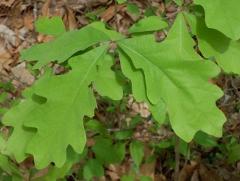
Botanically speaking, White Oaks are a medium sized deciduous tree, reaching 60 to 80 feet in height, found throughout the eastern half of North America. The leaves are lobed and yellowish green when young, turning darker with age. It is a slow growing species but may live as long as 600 years. White oak trees have high genetic variation and will hybridize with other members in the oak genus, Quercus.
The hard, heavy, and strong wood has made this tree species the most important timber species in the southeastern part of its range. It glues and takes a finish well and is used to make furniture, veneer, flooring, railroad ties and even caskets. White oak is valued for firewood and there is a high demand for its use in whiskey barrels.
Learn More
The hard, heavy, and strong wood has made this tree species the most important timber species in the southeastern part of its range. It glues and takes a finish well and is used to make furniture, veneer, flooring, railroad ties and even caskets. White oak is valued for firewood and there is a high demand for its use in whiskey barrels.
Learn More
White Oak leaves, Quercus alba
©2012 TreesForMe Original Image,See usage requirements.
White Oak, Quercus alba
©2012 TreesForMe Original Image. See usage requirements.
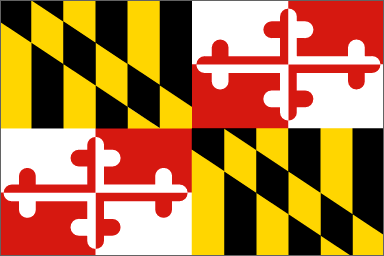
S3
Chamaecyparis thyoides, Atlantic White Cedar
Corylus cornuta, Beaked Hazelwood
Magnolia tripetala, Umbrella Magnolia
Malus angustifolia, Narrowleaved Wild Crab, Southern Crab Apple
Picea rubens, Red Spruce
Ptelea trifoliata, Waferash, Common Hoptree
Quercus prinoides, Dwarf Chestnut Oak
Salix caroliniana, Carolina Willow
Sorbus americana, American Mountain ash
Symplocos tinctoria, Sweetleaf
SU
Celtis laevigata, Sugarberry
Salix discolor, Pussy Willow
Chamaecyparis thyoides, Atlantic White Cedar
Corylus cornuta, Beaked Hazelwood
Magnolia tripetala, Umbrella Magnolia
Malus angustifolia, Narrowleaved Wild Crab, Southern Crab Apple
Picea rubens, Red Spruce
Ptelea trifoliata, Waferash, Common Hoptree
Quercus prinoides, Dwarf Chestnut Oak
Salix caroliniana, Carolina Willow
Sorbus americana, American Mountain ash
Symplocos tinctoria, Sweetleaf
SU
Celtis laevigata, Sugarberry
Salix discolor, Pussy Willow
Definition and tree species listed with Maryland Protection Status:
Endangered- a species whose continued existence as a viable component of Maryland's flora or fauna is determined to be in jeopardy.
Threatened- a species of flora or fauna that appears likely, within the foreseeable future, to become endangered in Maryland.
Endangered Extirpated- a species that was once a viable component of the flora or fauna of Maryland, but for which no naturally occurring populations are known to exist in the State.
Endangered- a species whose continued existence as a viable component of Maryland's flora or fauna is determined to be in jeopardy.
Threatened- a species of flora or fauna that appears likely, within the foreseeable future, to become endangered in Maryland.
Endangered Extirpated- a species that was once a viable component of the flora or fauna of Maryland, but for which no naturally occurring populations are known to exist in the State.
Threatened:
Prunus alleghaniensis, Allegheny plum
Quercus shumardii, Shumard Oak
Thuja occidentalis, Arborvitae
Endangered:
Carya laciniosa, Shellbark Hickory
Cornus rugosa, Roundleaf dogwood
Larix laricina, Tamarack, Larch
Morella caroliniensis, Southern Bayberry
Oxydendrum arboreum, Sourwood
Persea borbonia, Redbay
Prunus alleghaniensis, Allegheny plum
Salix exigua, Narrowleaf Willow
Salix lucida, Shining willow
Zanthoxylum americanum, Common Prickly Ash
Prunus alleghaniensis, Allegheny plum
Quercus shumardii, Shumard Oak
Thuja occidentalis, Arborvitae
Endangered:
Carya laciniosa, Shellbark Hickory
Cornus rugosa, Roundleaf dogwood
Larix laricina, Tamarack, Larch
Morella caroliniensis, Southern Bayberry
Oxydendrum arboreum, Sourwood
Persea borbonia, Redbay
Prunus alleghaniensis, Allegheny plum
Salix exigua, Narrowleaf Willow
Salix lucida, Shining willow
Zanthoxylum americanum, Common Prickly Ash





White Oak is the most abundant oak
tree species growing in Maryland and has
populations in every county. Rightly so, it was
named the State Tree in 1941 by the State
Legislature. Up until 2002, Maryland was home
to the largest White Oak in the nation. The
stately Wye Oak in Talbot County was 96 feet
tall with a trunk circumference of over 31 feet!
The 61,000 pound trunk was estimated to have
been alive since the 1500's and finally collapsed
during a thunderstorm. As of the 2013 Big Tree
Registry, the current Quercus alba champion of
Maryland was last measured in 2008 and
stands 97 feet tall.
